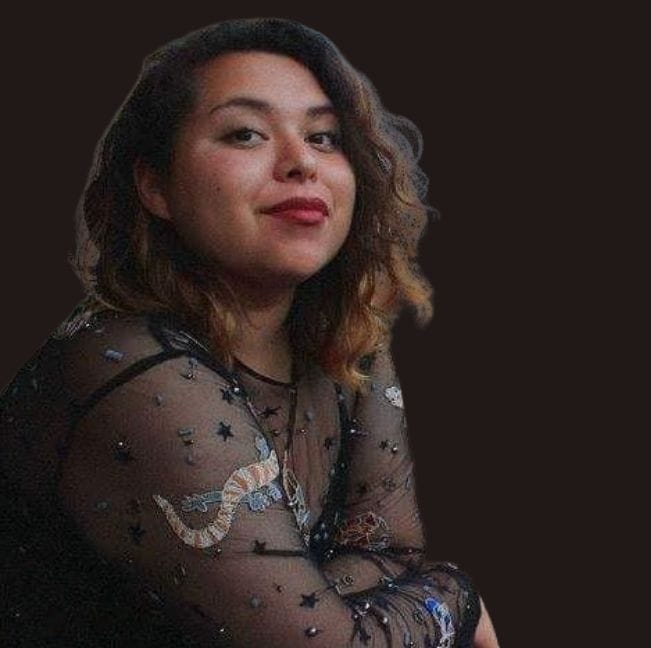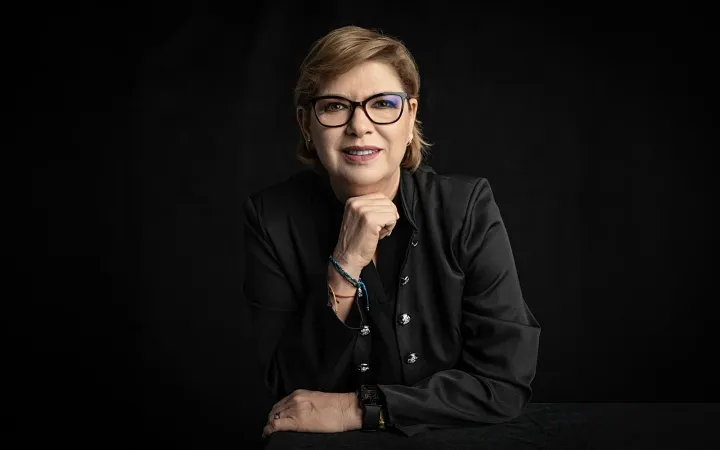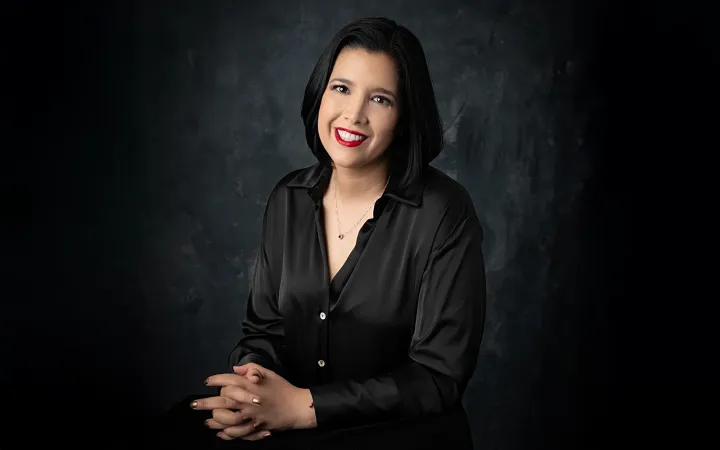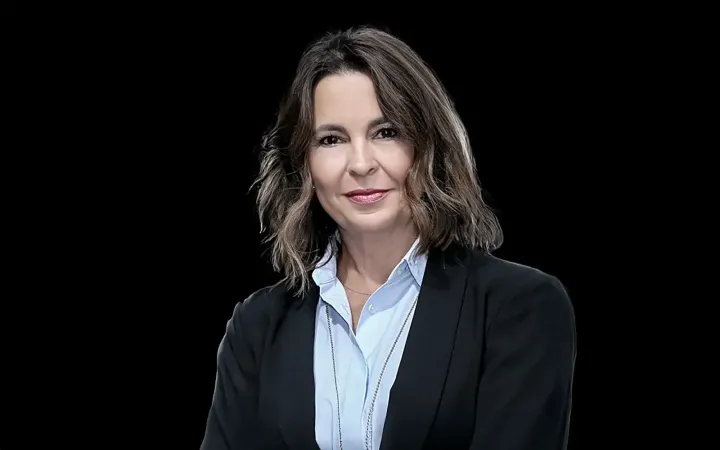Por Sac-Nicté Guevara Calderón

Durante el baile inaugural del segundo mandato de Donald Trump fue su hija —y ex asesora presidencial— quien acaparó la atención de los amantes de la moda. Ivanka apareció en el escenario con una réplica del vestido que Hubert de Givenchy creó para Audrey Hepburn y que la actriz usó en la película Sabrina, también protagonizada por Humphrey Bogart y William Holden. El atelier de alta costura de la misma casa de moda se encargó de la recreación. Un comunicado compartido con Vogue por un portavoz de la Casa Blanca mencionó: “Durante mucho tiempo, Audrey Hepburn ha sido una inspiración personal para Ivanka, que considera un gran privilegio honrar su legado de esta manera, y está increíblemente agradecida al equipo de Givenchy por hacer realidad este momento”. En las notas publicadas por distintos medios de comunicación, describen a Ivanka como “radiante”, “espléndida”, “deslumbrante”, y aunque un texto de Vogue promete, en el título, explicar “el profundo significado del vestido”, se queda sólo en un “por qué” que el autor no resuelve nunca. Recuentos superficiales, críticas que se quedan en lo que Ivanka sin duda pretendía: el asombro del primer vistazo.
En redes sociales, sin embargo, la ironía de la elección de Ivanka no pasó desapercibida. Diet Prada se preguntó en una publicación en instagram: “¿qué pensaría de este ‘tributo’ la humanitaria Audrey Hepburn, que fue parte de la resistencia holandesa frente a los nazis?”, y varios usuarios de distintas redes replicaron preguntas similares y recordaron, en caracteres limitados, el trabajo como activista de la actriz.
Sabrina sigue la historia de la hija de Thomas Fairchild, el chofer de la familia Larrabee, desde su primer enamoramiento con uno de los hermanos Larrabee, su viaje a París y su regreso a Estados Unidos, completamente transformada.
Incluso más que Breakfast at Tiffany's (mi favorita personal), Sabrina construyó la imagen de Audrey Hepburn que se volvió atemporal, con el corte pixie más perfecto de la historia, enfundada por primerísima vez en Givenchy, una colaboración que se repitió en las siguientes películas de Hepburn —la actriz lo demandaba en sus contratos—, y que se convertiría en una amistad afianzada.
Para Vanessa Friedman, el despliegue del baile inaugural fue una recreación de un Estados Unidos que quiere pretender que es idéntico a Hollywood, uno en el que no importa premiar una película como Emilia Pérez o negar todo lo que va más allá de lo binario. La elección de Ivanka encaja en esa visión que describe Friedman: es el tomar una película, un personaje, una actriz y a un vestido desde el lado más superficial posible.
Pero Audrey era mucho más. Y la moda también lo es.
Durante la Segunda Guerra Mundial, en la Holanda ocupada, Audrey formó parte de la resistencia: era mensajera, se encargó de entregar medicina, comida y recados; era intérprete y recaudó fondos como bailarina en recitales secretos llamados “black evenings” o “noches oscuras”. Además, su familia escondió en su casa a un paracaidista británico tras la batalla de Arnhem. Su activismo no terminó al convertirse en una de las estrellas más icónicas de Hollywood, pues fue Embajadora de Buena Voluntad de UNICEF de 1988 a 1993, el año de su muerte.
En el ensayo “An Audrey girl” Carrie Courogen escribe: “No puedo evitar preguntarme: ¿cómo es posible que, en una cultura cada vez más empeñada en reexaminar a las mujeres del pasado, Hepburn no haya hecho más que seguir encogiéndose en la simplificación excesiva? ¿Cuándo empezamos a ver sus películas como una mera aspiración, un alimento reconfortante, en lugar de las complicadas tumbas que son?”
“La moda funciona como un espejo de nuestro tiempo, por lo que es intrínsecamente política”, señala Andrew Bolton en Power Dressing: Charting the Influence of Politics on Fashion, un artículo de Maya Singer para Vogue. “Se ha utilizado para expresar tendencias patrióticas, nacionalistas y propagandísticas, así como cuestiones complejas relacionadas con la clase, la raza, la etnia, el género y la sexualidad”. Un reel de Vanessa Rosales para The Gazing habla también de cómo al pensar en la relación entre moda y política, el estilo se asocia muchas veces a las rebeliones. Como un ejemplo, está el pañuelo verde que se extendió desde Argentina al resto de Latinoamérica. Es menos común que pensemos en la moda como un guiño de posturas peligrosas, conservadoras, fascistas, porque ahí radica la trampa de su supuesta superficialidad, de pensar en la elección de Ivanka como un reflejo del estilo “old money” o del “lujo silencioso” o de cualquier otra tendencia que, en realidad, no es tan fugaz ni tan inocente como lo parece. “La moda ha servido históricamente, en muchos casos, para ser un elemento de identidad nacionalista, y eso es exactamente lo que encarna Donald Trump, y exactamente lo que encarna muchas veces la blanquitud en el poder, esta idea de que cierta estética es la correcta porque es blanca, porque es apropiada, porque es elegante”, dice también Vanessa Rosales.
Esa elección de Ivanka forma parte del performance de la extrema derecha, de la supremacía blanca, de las políticas antimigrantes, en fin, del poder político recién elegido en Estados Unidos.
Ivanka no entendió (y probablemente nunca entienda) que la Sabrina de Billy Wilder no es una adaptación más de Cenicienta con vestidos de alta costura, es una crítica al sistema de clases, que se dedica a mostrar al llamado “sueño americano” como una mentira. Courogen también escribe al respecto: “Cuanto más veo Sabrina, y cuanto mayor me vuelvo, más claro veo el desprecio de Billy Wilder por la política de clases estadounidense. Los ricos son despreocupadamente crueles; adoran la adicción al trabajo y el estoicismo; desconfían de los outsiders. La gente, en el mundo de los Larrabee, es prescindible. El dinero no lo es”.
Emma Kathleen Hepburn Ferrer, nieta de la actriz, se pronunció sobre la elección de Ivanka en Instagram: “Permítanme explicarlo. Más que ser sólo un icono de moda, Audrey Hepburn era la elegancia personificada. Esto empezó temprano: está documentado que como adolescente, bailó en secreto para recaudar dinero para la resistencia holandesa. Después, en el punto más alto de su fama, eludió los reflectores de Hollywood para criar a sus hijos en Europa, y pasó sus últimos años dedicándose a la jardinería en Lake Geneva y defendiendo los esfuerzos de la UNICEF para ayudar a niños que se enfrentaban a la guerra y la hambruna. Su legado consiste en el estilo, sí, pero también en la sustancia, algo que requiere un tributo mesurado y reflexivo, no una imitación”.
No tengo duda alguna que el motivo detrás de la elección de ese vestido era transmitir el recuerdo de la conversación entre Sabrina y su padre en la que la joven, en un momento de ensoñación, declara: “¡la luna está buscándome!”, pero en realidad, para sorpresa de no pocos, terminó siendo como un diálogo entre Thomas Fairchild y Linus Larrabee:
—¿Puedo preguntar, señor, ¿cuáles exactamente son sus intenciones?
—¿Mis intenciones? Poco éticas, reprobables, pero muy prácticas.
*Sac-Nicté Guevara Calderón es Maestra en Literatura Hispanoamericana por la Universidad Complutense de Madrid y Maestra en Comunicación por la Universidad Iberoamericana. Fundadora y directora de la revista La Desvelada. Actualmente estudia el Doctorado en Letras Modernas en la Universidad Iberoamericana.
Las opiniones expresadas son responsabilidad de sus autoras y son absolutamente independientes a la postura y línea editorial de Opinión 51.






Comments ()